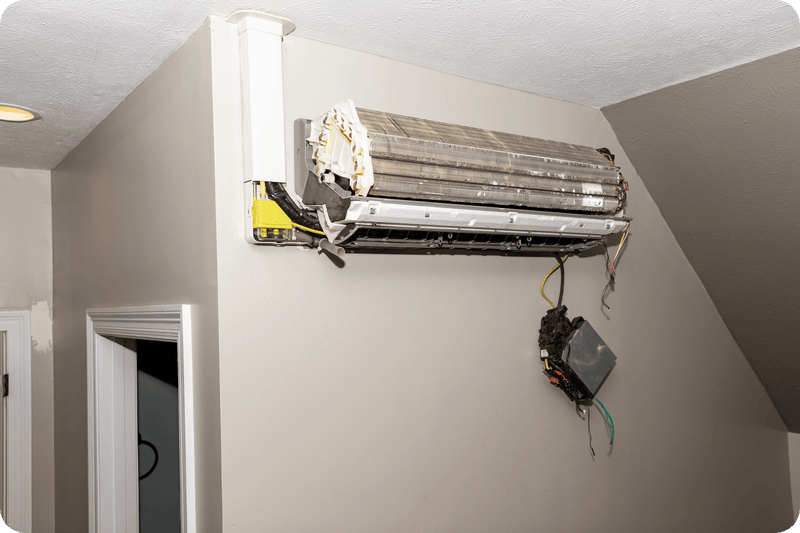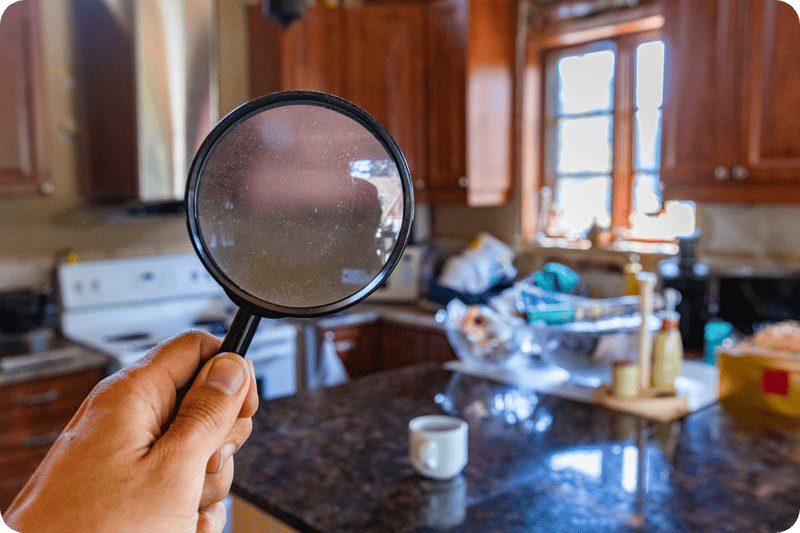The Signs And Risks Of A Mini Split That’s Not Installed Properly

It’s tempting to go the DIY route when installing ductless mini splits. The instructions are straightforward, and the online prices are much cheaper than contractor quotes. But, it’s not as easy as it looks, and an improper installation can cause the system to fail and cause damage to your home.
That’s why it’s essential to call a professional. This way, you’re sure you have the right system to address your home’s unique heating and cooling needs. And, you’re backed by manufacturer warranties and the contractor’s guarantees.
Before we go any further, we’ll note that HydroKleen208 does not install ductless units. Nor do we handle most mini split repair calls. Our specialty is mini split deep cleanings in Boise Metro and Valley County in Idaho.
Cleanings go hand-in-hand with proper maintenance — and proper installations. You’d be surprised how often a lousy installation results in clogs, buildup, and other problems that require cleaning even after you’ve gotten the system repaired.
With that in mind, we’re stepping out of our usual maintenance role to help you head off problems down the line. If you’re thinking about putting a mini split in your home or business yourself, please consider these points first.
And, once your mini split is installed by a licensed professional, remember to call us for regular cleanings. Even a single visit from us every year or two makes a huge difference.
What Can Go Wrong With A Bad Mini Split Installation
Installing a mini split is not a DIY operation. Here’s what could go wrong if you don’t use a licensed professional:- Units Fall Off The Wall
- Water Leaks Behind The Wall
- Noisy, Damaged, Or Malfunctioning Units
- Poor Indoor AIr Quality
- No Warranty
Indoor Units Fall Off The Wall
The simplest problem also carries the most risk for damage or even injury: An air handler falling off the wall. Sure, each unit comes with a specialized bracket. But, if it’s not fastened correctly or not bolted to the wall as it should be, that heavy unit can come crashing down. It will rip up more of the wall as the piping and wiring behind it get dragged down with it. Now you’re dealing with construction costs along with a broken air handler. That’s not to mention damage to any furniture or an injury to anyone in its path.Water Leaks Behind The Wall
An improper mini split installation can cause a condensate line clog, which results in water leaking behind your wall. It can take a while to notice, and by then, you’re dealing with a lot of damage — not to mention a possible mold problem. Each air handler has a condensate line, or drain pipe, to get rid of water inside the system. As your system dehumidifies the air in the summer, water vapor condenses into liquid and has to go somewhere. But that line is often flexible to run through the wall. If it kinks or bows, water builds up inside the air handler. The same happens if the line gets clogged with dust, dirt, or other buildup. The water has to go somewhere, and if it doesn’t leak out of the air handler and into the room, it drips behind the wall.Noisy, Damaged, Or Malfunctioning Units
You have many more options with mini splits than with conventional central air or heating. But, that also means more chances for something to go wrong. A system that’s too big or too small, or not suited for your home’s layout will not work the way it should.
That’s when you end up with noisy or malfunctioning units. It may be working too hard all the time to keep up with the load, and you hear it grinding.
Related: Mini Split Improper Installation: What Could Go Wrong?
Eventually, that excess wear and tear causes the components to break down. That means expensive repair calls and a much shorter lifespan for your mini split.
Or, it keeps working but never gets your home as warm or as cool as you want it. That’s common when a room is better suited for a recessed ceiling unit or low-wall air handler, for instance, rather than the more common high-wall unit.
Poor Indoor Air Quality

Along with poor comfort, you’re more likely to notice a drop in your indoor air quality. This happens due to poor circulation. Or, more often, dirt and mold buildup inside your system.
It’s a common problem even for professionally-installed systems. But, DIY jobs pose an even higher risk. You’re more likely to encounter a drain line clog, for instance, among other problems.
In this case, a cleaning will go a long way, and we’ll talk more about that later. But, with a bad installation, it’s just the start of your problems.
Related: My Does My Mini Split Smell Funny? (Common Causes And Fixes)
No Warranty
Read the fine print: If a licensed HVAC technician doesn’t install and maintain your mini split, the manufacturer is not obligated to cover the costs of anything that’s usually covered under warranty.
That means you can do everything right but still end up paying more if something’s wrong with the unit itself. Or if something usually covered comes up.
How To Find A Quality Mini Split Installer
Start by following the usual guidelines for choosing a contractor when you’re looking for a quality mini split installer. That means looking for a company that’s worked in your area for a long time. They should have a physical location you can visit and plenty of five-star reviews. References from friends and family are always a plus.
For mini splits, in particular, look for a company specializing in ductless systems. And check to see if they are certified for the brand you want.
Related: Who should I trust to maintain my air conditioner?
The extra money you’ll pay for a licensed HVAC technician that’s certified to work on your mini split brand is well worth it. You’ll save money in the long run — not to mention head off aggravation and discomfort — with the investment.
How To Keep Your Mini Split Working Great
Along with regular tune-ups, regular deep cleaning keeps your system running great for years to come. A dedicated cleaning eliminates all sorts of buildup that doesn’t get addressed during routine maintenance.
Related: How Often Should A Mini Split Be Cleaned?
The problem is that dirt, dust, and microbial contaminants (read: mold, mildew, and other organic matter) build upon the coil fins and behind the barrel fans of your indoor units. Those parts are tough to reach without taking the unit apart. Or, they’d take forever to clean manually.
Instead, HydroKleen208 uses customized equipment and powerful yet environmentally-safe cleaners to flush out virtually every pollutant building up inside your system. For example, here’s a photo where we’ve cleaned one side of the coil already but not the other:

Related: What Does It Cost To Clean A Heat Pump?
With one quick visit, you’ll notice an immediate difference in your system’s performance as well as your indoor air quality. You’ll likely see a drop in your electric bill, too. To learn more about our mini split and heat pump cleaning in Cascade, ID and down through Boise, click below or call us at (208) 779-5596.
